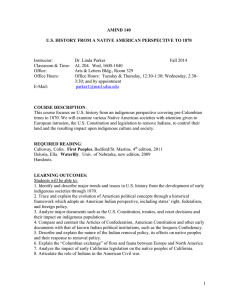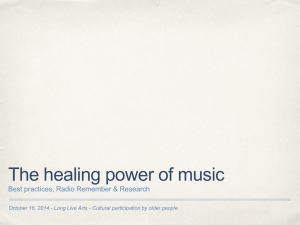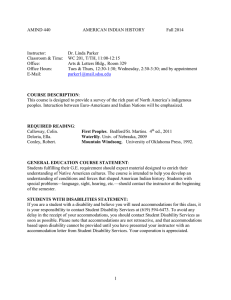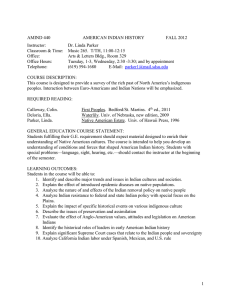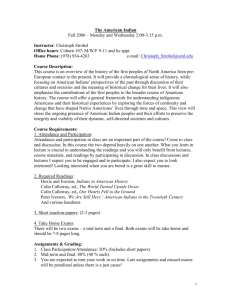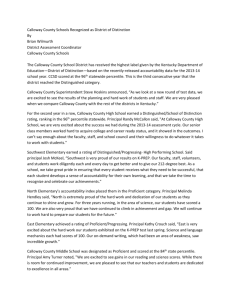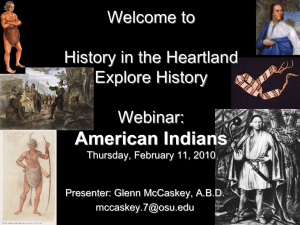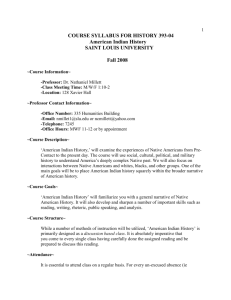Instructor: Dr. Linda Parker Fall 2014
advertisement
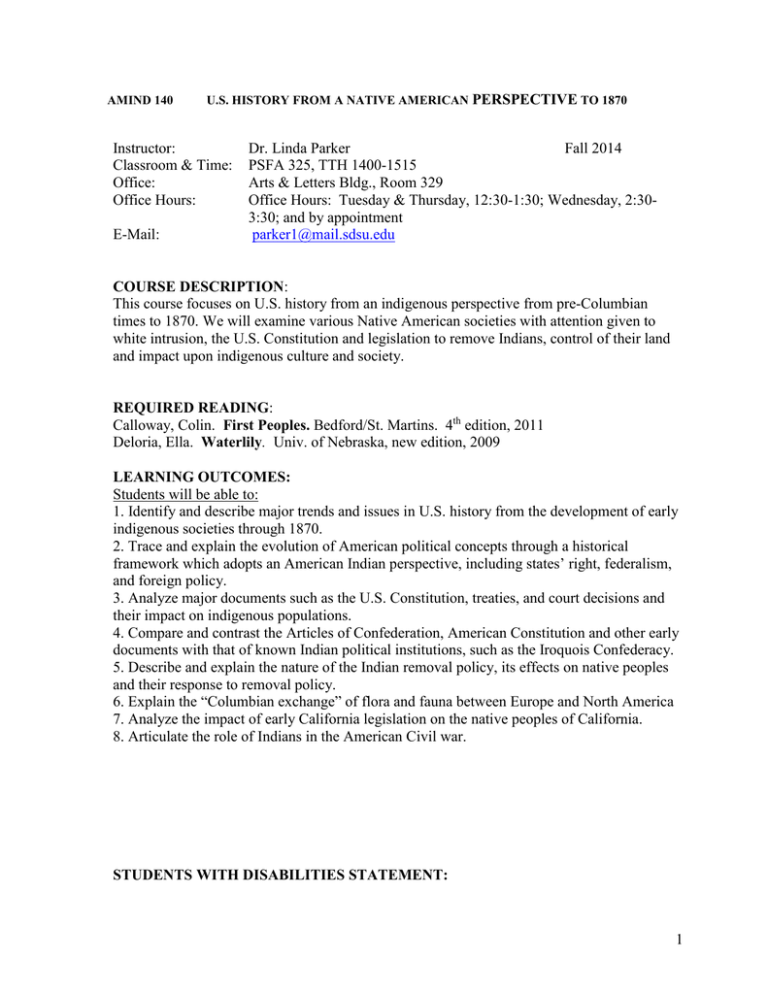
AMIND 140 U.S. HISTORY FROM A NATIVE AMERICAN PERSPECTIVE TO 1870 Instructor: Classroom & Time: Office: Office Hours: E-Mail: Dr. Linda Parker Fall 2014 PSFA 325, TTH 1400-1515 Arts & Letters Bldg., Room 329 Office Hours: Tuesday & Thursday, 12:30-1:30; Wednesday, 2:303:30; and by appointment parker1@mail.sdsu.edu COURSE DESCRIPTION: This course focuses on U.S. history from an indigenous perspective from pre-Columbian times to 1870. We will examine various Native American societies with attention given to white intrusion, the U.S. Constitution and legislation to remove Indians, control of their land and impact upon indigenous culture and society. REQUIRED READING: Calloway, Colin. First Peoples. Bedford/St. Martins. 4th edition, 2011 Deloria, Ella. Waterlily. Univ. of Nebraska, new edition, 2009 LEARNING OUTCOMES: Students will be able to: 1. Identify and describe major trends and issues in U.S. history from the development of early indigenous societies through 1870. 2. Trace and explain the evolution of American political concepts through a historical framework which adopts an American Indian perspective, including states’ right, federalism, and foreign policy. 3. Analyze major documents such as the U.S. Constitution, treaties, and court decisions and their impact on indigenous populations. 4. Compare and contrast the Articles of Confederation, American Constitution and other early documents with that of known Indian political institutions, such as the Iroquois Confederacy. 5. Describe and explain the nature of the Indian removal policy, its effects on native peoples and their response to removal policy. 6. Explain the “Columbian exchange” of flora and fauna between Europe and North America 7. Analyze the impact of early California legislation on the native peoples of California. 8. Articulate the role of Indians in the American Civil war. STUDENTS WITH DISABILITIES STATEMENT: 1 If you are a student with a disability and believe you will need accommodations for this class, it is your responsibility to contact Student Disability Services at (619) 594-6473. To avoid any delay in the receipt of your accommodations, you should contact Student Disability Services as soon as possible. Please note that accommodations are not retroactive, and that accommodations based upon disability cannot be provided until you have presented your instructor with an accommodation letter from Student Disability Services. Your cooperation is appreciated. GRADES: Your final grade in the course will be based on: Two major examinations (100 points each) 200 points Exam on Waterlily 50 points ________ Total Points 250 points Your final grade will be calculated according to the following point scale. A 233-250 C175-183 A225-233 D+ 168-175 B+ 218-225 D 158-168 B 208-218 D150-158 B200-208 F below 150 C+ 193-200 C 183-193 CR 183-250 EXAMS: Two exams will be given to evaluate your understanding of material covered in lectures, assigned readings, class discussions, and films. The exams will contain short essay questions, short answer, identification, and multiple choice questions. SHORT EXAM ON WATERLILY: The short exam may include short essays, brief answers, identification, and multiple choice questions. The exam is worth 50 points. QUIZZES & ASSIGNMENTS: Throughout the semester quizzes and in-class assignments will be given at the instructor’s discretion. They will count as extra credit and no make-ups will be given. CLASS ATTENDANCE: It is your responsibility to attend class on a regular basis. Exceptional attendance can benefit your final grade, especially in borderline cases. COURSE OUTLINE: The outline presented below is tentative and may vary, depending upon lectures, class 2 discussions, and progress of the class. DAILY SCHEDULE AND ASSIGNED READINGS Aug 26/28 Introduction Sept 2 Early Native Civilizations in North America Calloway, pp. 1-39, 65-71 Sept 4 Columbian Exchange of Flora and Fauna Biological Impact Calloway, pp. 78-85 Sept 9 European Invasion of North America (Spanish) Calloway, pp. 85-102 Sept 11-23 American Colonists, Puritans and Indians of the Atlantic coast Calloway, pp. 102-111, 133-135, 139 Sept 25/30 Iroquois Indians in Colonial America. Calloway, pp. 152-186, 193-198 Oct 2 TBA Oct 7/9 American Revolution Calloway, pp. 218-255 Oct 14-21 National Government. Federalism U.S. Constitution. American Indians & the New Nation Calloway, pp. 232-237, 274-285 Handouts Oct 23 EXAM 1 Oct 30/ Nov 4/6 Indian Removal Calloway, pp. 286-298 NOV 11 Veterans Day – Campus Closed Nov 13-25 West, California Gold Rush and Indian Slavery Calloway, pp. 332-341, 343-347 3 Nov 27 NO CLASS. Thanksgiving Break Dec 2 Exam and class discussion on Waterlily. (Read entire book). Dec 4 the Indian Experience in the Civil War Calloway, pp. 341-344 Dec 9 EXAM 2 4
